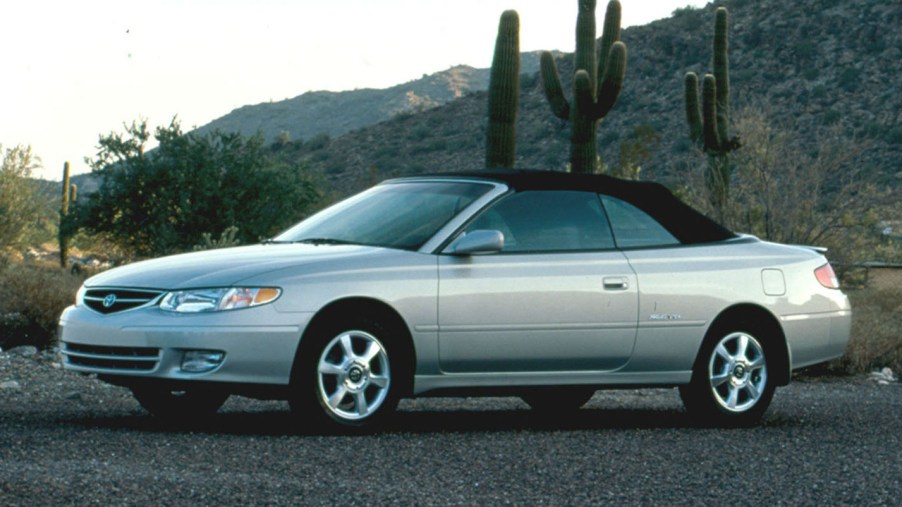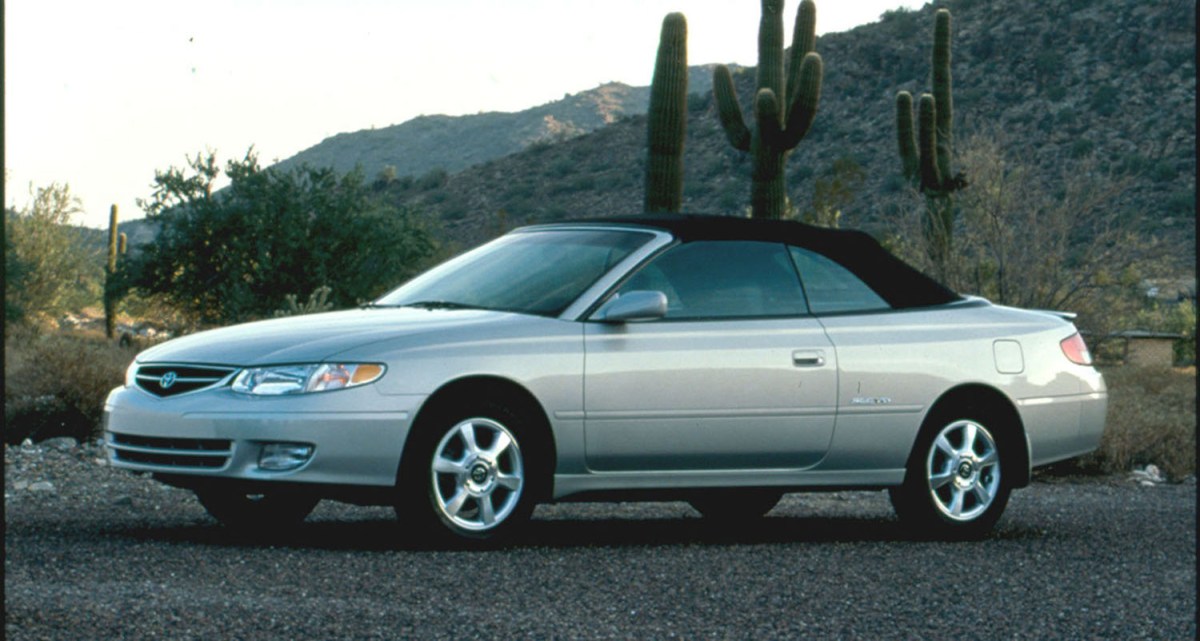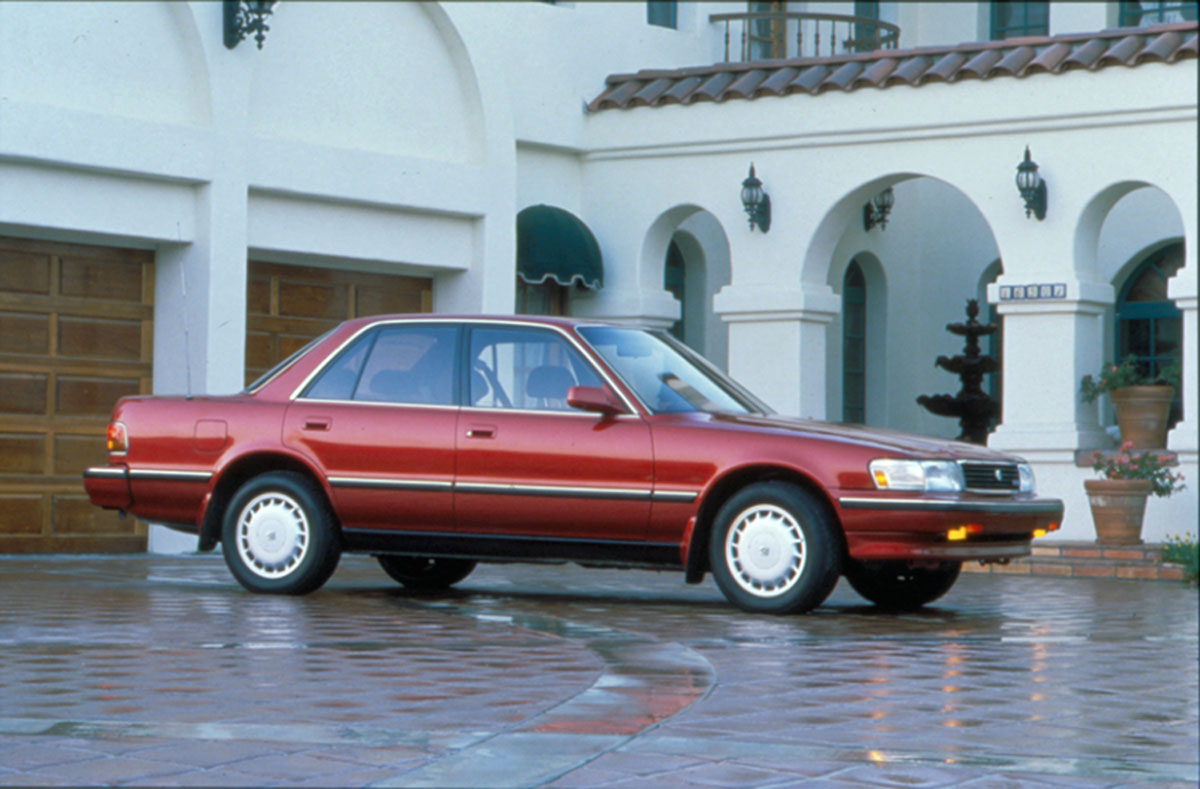
5 Historic Toyota Models You’ve Probably Forgotten About
Years before anyone reading this was born, Toyota was founded on August 28, 1937. Given its been around the block quite a few times since then, Toyota has many models that have been discontinued and, as a result, long forgotten. Admittedly, not every car on this list has been totally forgotten, but you likely haven’t thought about them since people were worried about Y2K.
Are the Toyota Camry and Solara the same?

Was the Toyota Camry Solara just a Camry? Mechanically, yes. Aesthetically, no. The first generation Camry Solara was introduced in 1998 as a way for Toyota to capture a younger demographic with sportier and more distinctive styling.
Admittedly, the Camry sedan of the time didn’t scream “youthful,” so the Solara was offered in both a coupe and convertible form. Powertrain options are identical to the Camry sedan. You can opt for a 135 horsepower 2.2-liter 4-cylinder or a 3.0-liter V6 that makes 200 horsepower, says Consumer Reports. The 1MZ-FE V6 is incredibly smooth and allowed the Camry Solara to hit 60 mph in only 7.1 seconds—faster than an NB Miata. The Solara was also offered with a 5-speed manual or a 4-speed automatic.
For the 2004 model year, Toyota released a second-generation Camry Solara with updated powertrains and a completely new design. The V6 was now a 3.3-liter making 225 horsepower, while the 4-cylinder was now a 2.4-liter making 157 horsepower. It is important to note that the 2.4-liter was actually introduced in 2001 with the facelift of the first generation.
Like many inexpensive coupes and convertibles, the Solara was eventually discontinued in 2008 due to poor sales.
Why was the Toyota Celica discontinued?
Unlike the Camry Solara, which spent minimal time on the market, the Celica came into existence in 1970. The first 15 years of the Toyota Celica’s life established the model with a front engine and rear-wheel drive layout.
In fact, the original Celica Liftback was often referred to as the “Japanese Mustang,” reports Dyler, which given their visual similarity, is not a surprise. The second and third generations of the Celica were built on the same platform as the Toyota Supra. This changed with the 4th generation in 1985, when the Celica adopted the front-wheel drive layout many of us remember from the 90s into the early 2000s.
Sadly, the Celica was part of a rapidly declining market segment: sports coupes. Celica sales dropped by over 50% between 2000-2003, and by its last two years, Toyota was moving under 10,000 units. Sadly, the nail in the coffin for many vehicles we love comes down to whether or not we are willing to buy them.
Is the Toyota Previa supercharged?
If someone were to describe a vehicle as mid-engine, supercharged, and rear-wheel drive, I’m guessing you wouldn’t be thinking of Toyota’s second foray into the minivan market. The generation of the Toyota Previa we got in the U.S. was probably the strangest minivan ever made.
The name of this long-forgotten Toyota model comes from the Italian word “previdenza,” reports Toyota UK Magazine, meaning providence or foresight. In other words, Toyota seemed to think the Previa’s design and engine layout would become the new norm for minivans. Unfortunately, the Previa’s 2.4-liter 4-cylinder only made around 130 horsepower, making it significantly underpowered compared to its V6 Chrysler competition. Later it would add a supercharged version which made similar numbers to the competition.
What really killed the Previa was likely down to its styling and its price. According to Cars.com, the Previa started at nearly $14,000 more than the equivalent Dodge Caravan in 2022 money. The Previa was ultimately replaced by the Sienna, which is still being sold today.
Can you buy a Toyota Hilux in the U.S.?
It’s not as though people haven’t always considered Toyota models reliable. Still, the Hilux, or “Toyota Pickup” in the North American market, is a prime example of the incredible build quality that gave Toyota this reputation. Not every Toyota is as indestructible as the Hilux, but the ethos that created the Hilux is still a part of the manufacturing process that makes Toyota today.
The Hilux was available for four generations in North America. The Hilux moniker was phased out with the second generation, but we continued to get the Hilux and most of its 4-cylinder (and later the V6) engine options through 1997.
In 1997, we were introduced to the first-generation Toyota Tacoma, which ultimately replaced the Toyota Hilux, reports HotCars. The Hilux is still produced in other markets, and despite the different design and powertrain offerings, they are not too mechanically dissimilar. Toyota has ostensibly adapted different models to suit the preferences of different markets.
What car replaced the Toyota Cressida?

The Cressida is potentially the least known model on this list. It was based on the Toyota Mark II, which was sold from 1968-2004. We got the Mark II in North America rebadged as the Cressida, beginning with its 3rd generation in 1976 to part way through its 6th generation in 1992.
The Cressida was built with a front engine/rear-wheel drive layout and had various inline 4 and inline 6 engine options over the years. In 1988, the Cressida’s final generation came with the 7M-GE 3.0L I6 and double wishbone suspension from the 3rd generation Toyota Supra, reports The Truth About Cars.
Unfortunately, with the Camry and new Lexus ES crushing its sales, the Cressida was discontinued in 1992. Despite the Lexus ES 250 taking its place, Toyota did “replace” the Cressida with the Toyota Avalon in 1995.


